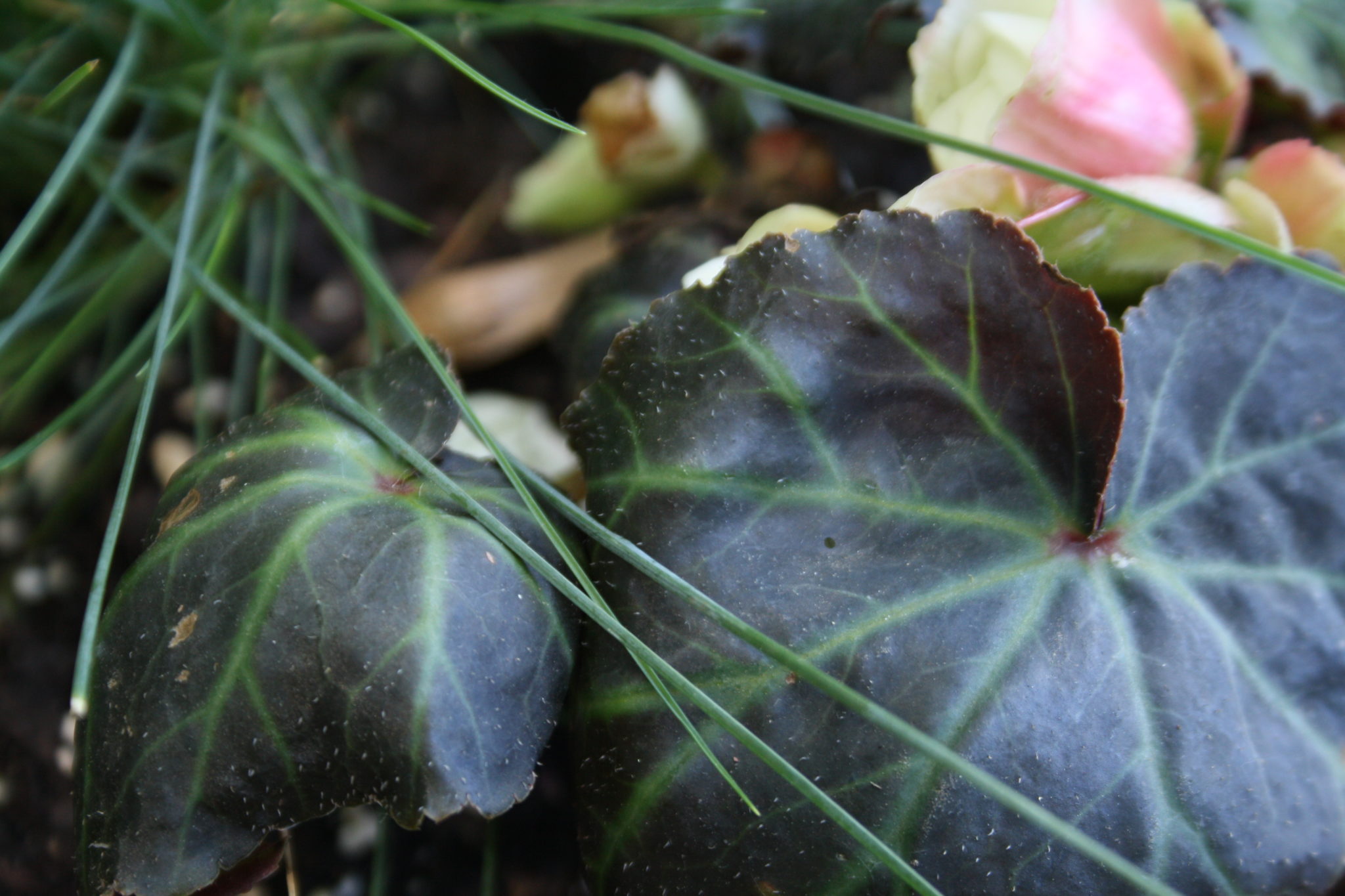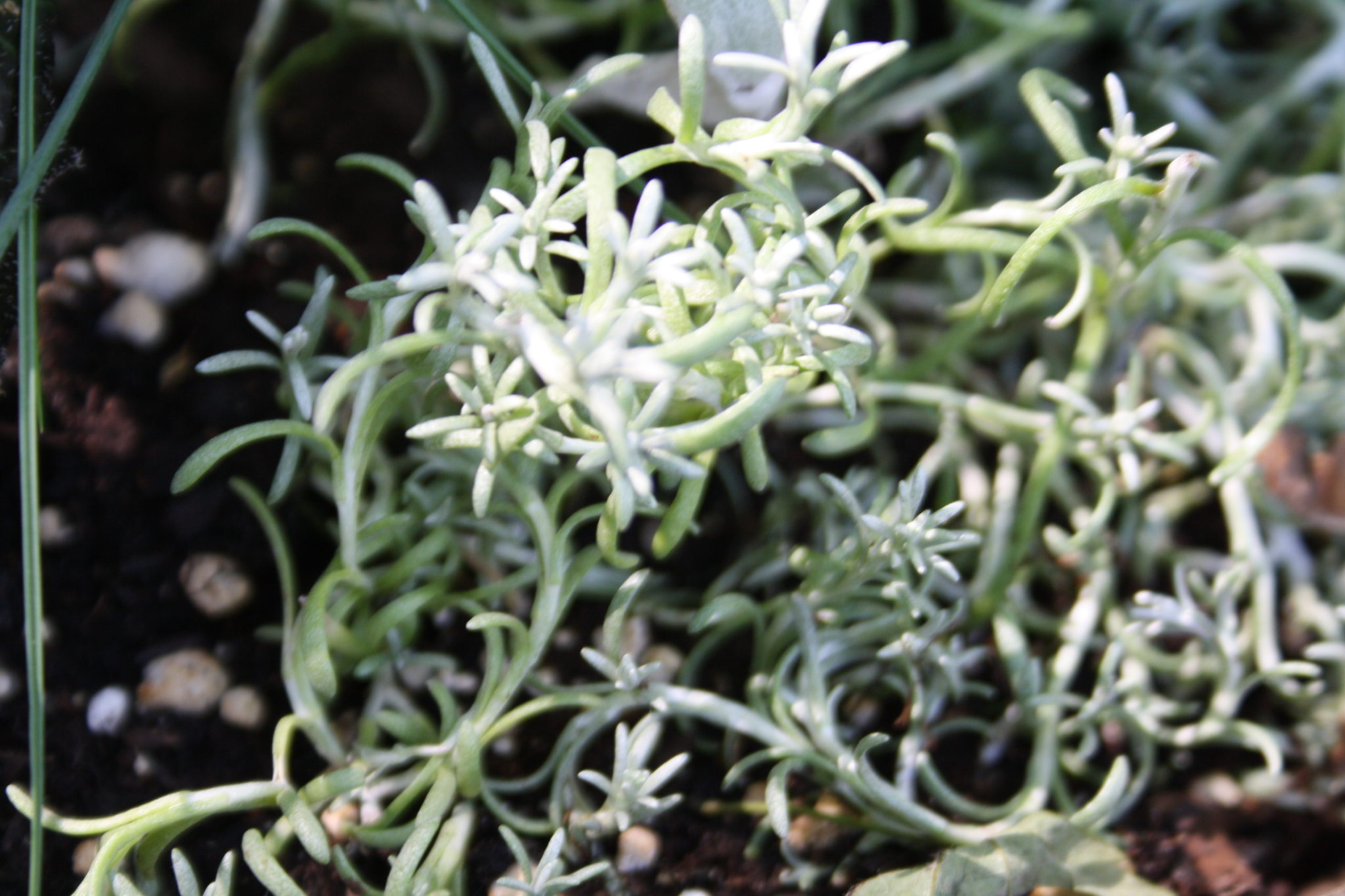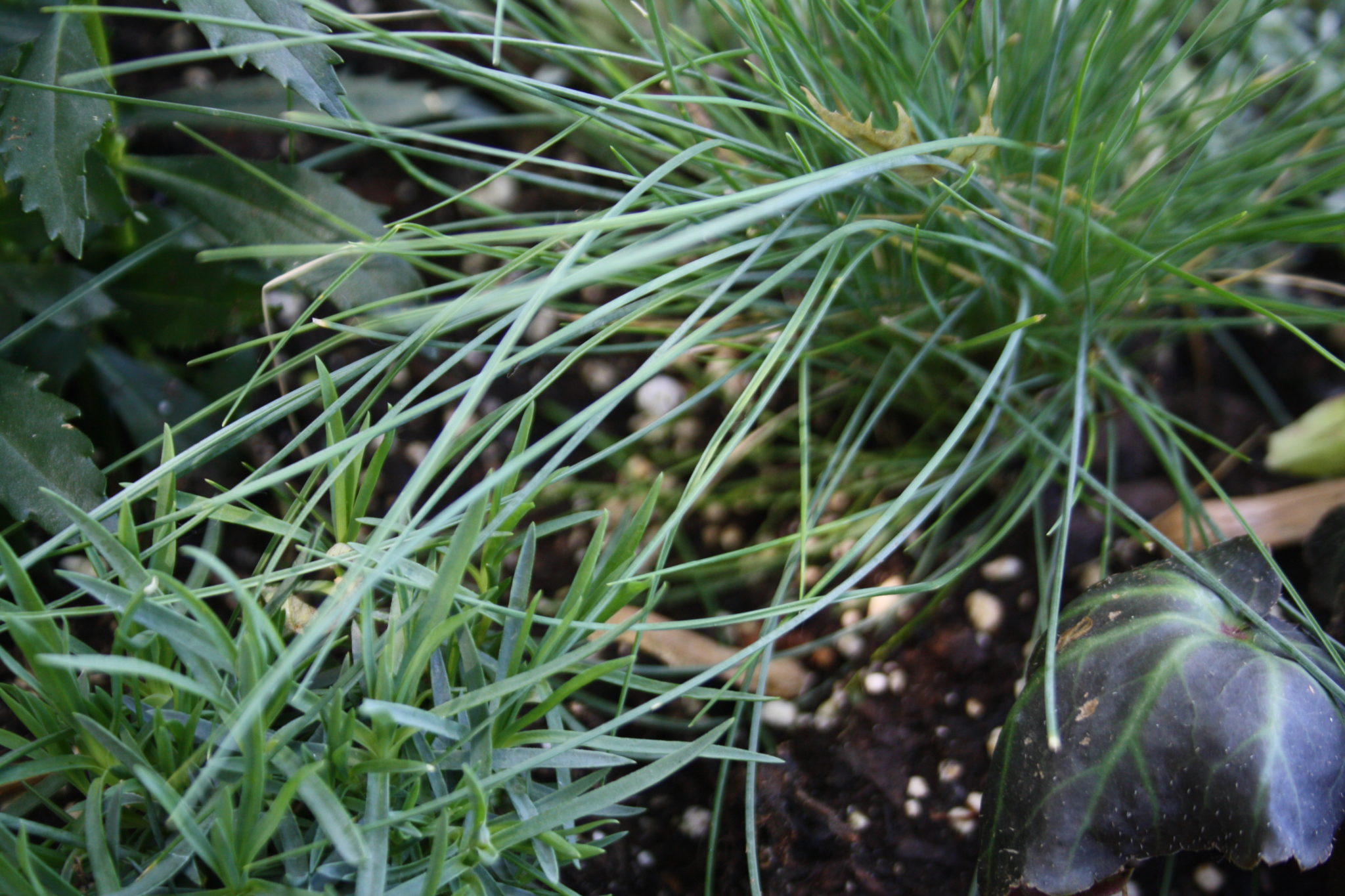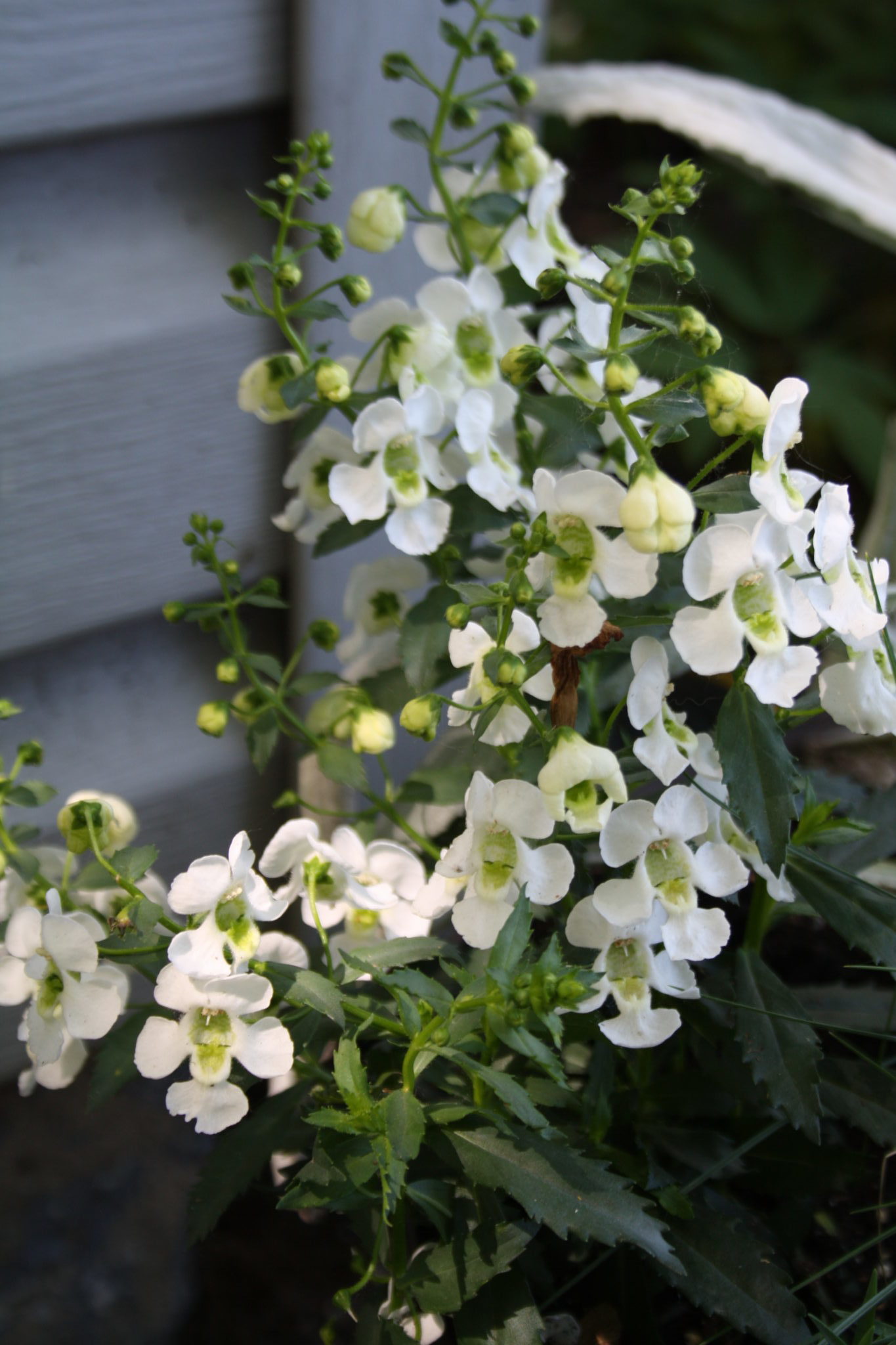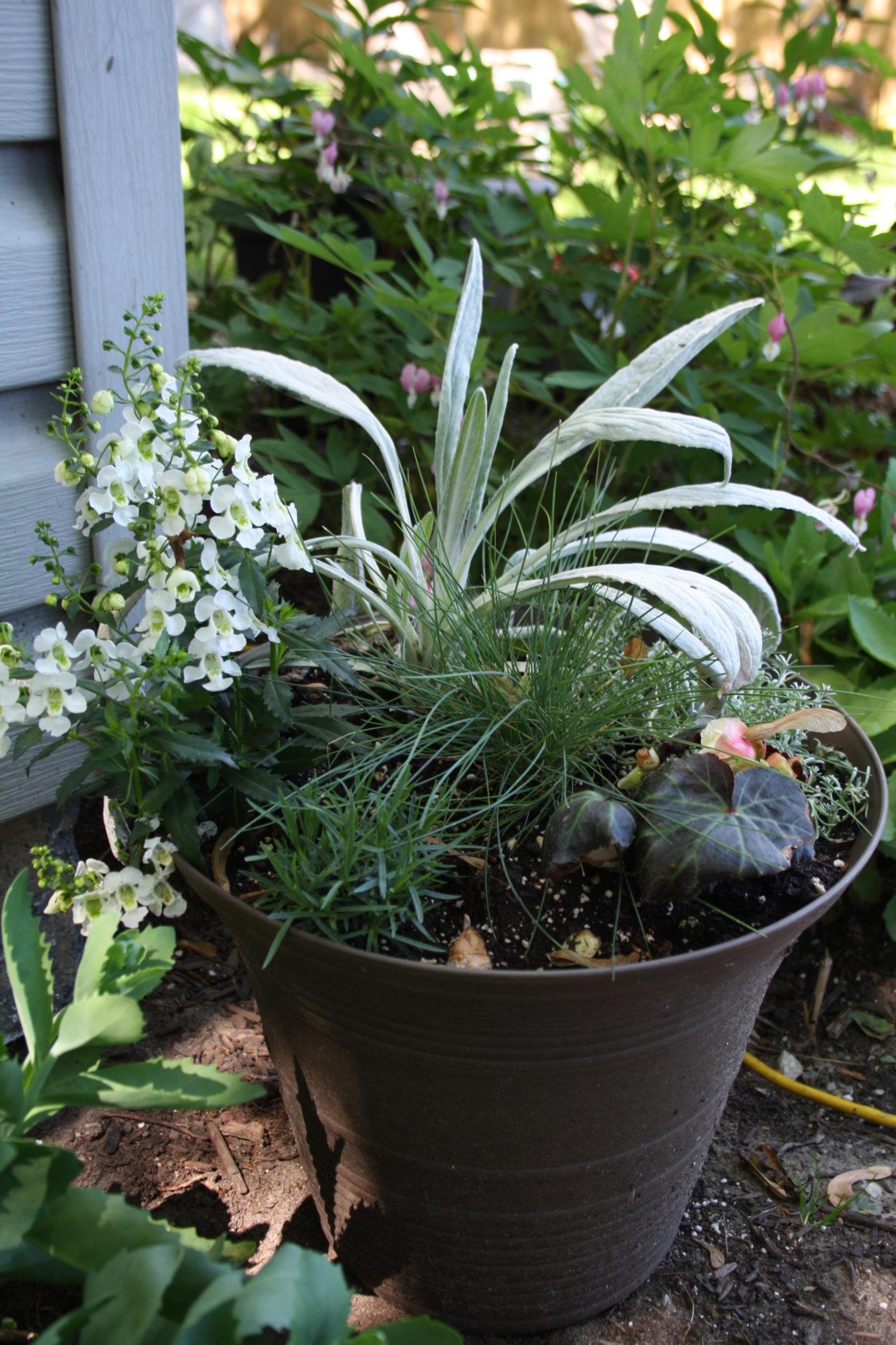I have one last Mini Hosta planting to share, for this year at least, and it’s actually two. Two or three years ago I made a couple of hypertufa using the bottom of a trash can for the mold. I had seen a relatively squat planter with straight up and down sidewalls that I wanted to replicate. This year I planted mini hosta in those hypertufa.
Both planters feature hosta purchased last year. I had them planted under my Japanese Maple and neither seemed to be doing very much. I also wanted to have them in the new back garden where I could see them from the house.
Hosta ‘Mini Skirt’
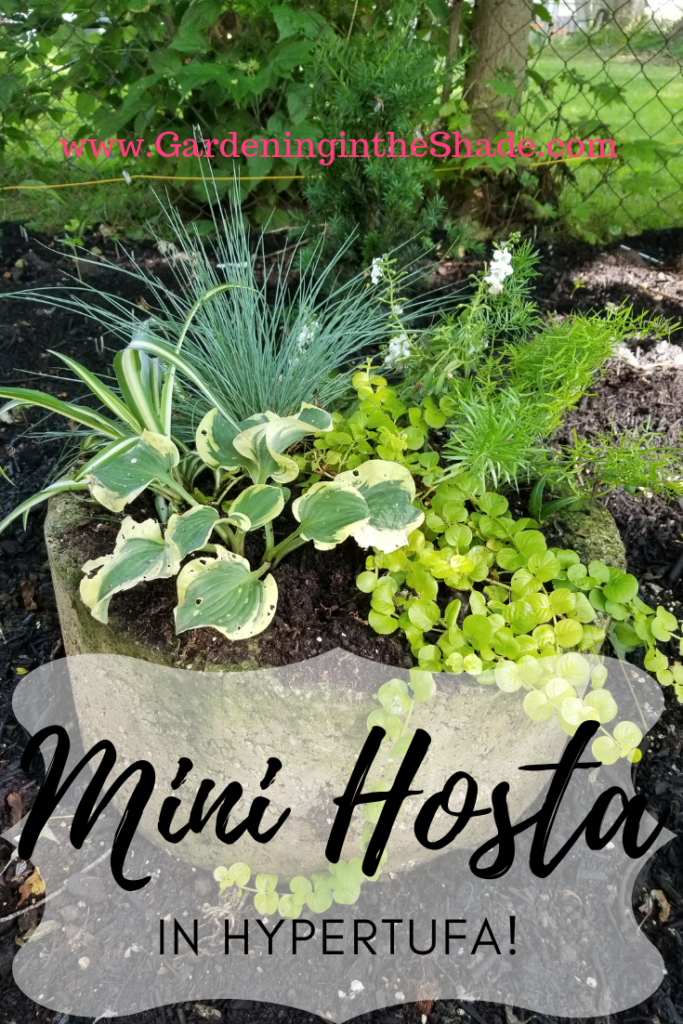
I planted ‘Mini Skirt’ with a blue fescue, creeping jenny, and white angelonia. The angelonia is one of those try it and see what happens situations. Angelonia is usually planted in full sun and tolerates heat well. It will get the heat but not so much the sun so it may work okay or it might completely flop. At the last minute, I crammed a leftover spider plant and some asparagus fern in there. Asparagus Fern will likely be scarce for the 2020 season, so if you like it in your planters I recommend you overwinter a bit indoors.
You can see the slugs or something have been at this one, most of that occurred when it was under the Japanese Maple. If it continues, I’ll sprinkle some Diatomaceous Earth around it.
Hosta ‘Church Mouse’
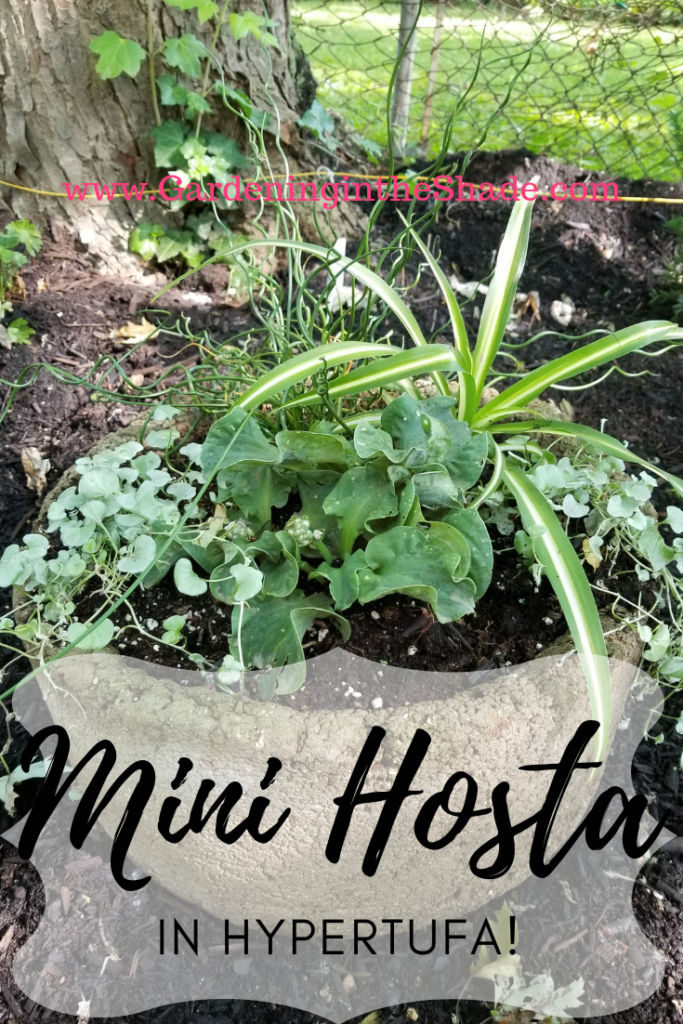
Church Mouse has these lovely crisp and twisty blue-green leaves. When it flowers – soon, the buds are showing – the flowers are on short stems and they are perfectly proportioned to the plant. Church Mouse was an impulse buy, but as soon as I saw it I just had to have it.
For this planter I added a twisty juncus for height, some Dichondra Silver Falls for my spiller and since it is still a bit small for this year, a spider plant for filler although a little bit of fescue would better continue the blue & silver theme.
I’m happy with my Mini Hosta in Hypertufa. In the fall once the leaves have died back I’ll move both into the shed for the winter so the boy dogs can’t do what boy dogs do.
Have you planted any of the smaller hosta in your garden or do you keep them in pots? Have you made any hypertufa for your garden? Kim at the Hypertufa Gardener has all kinds of tips and ideas – I used her guidelines to make mine.

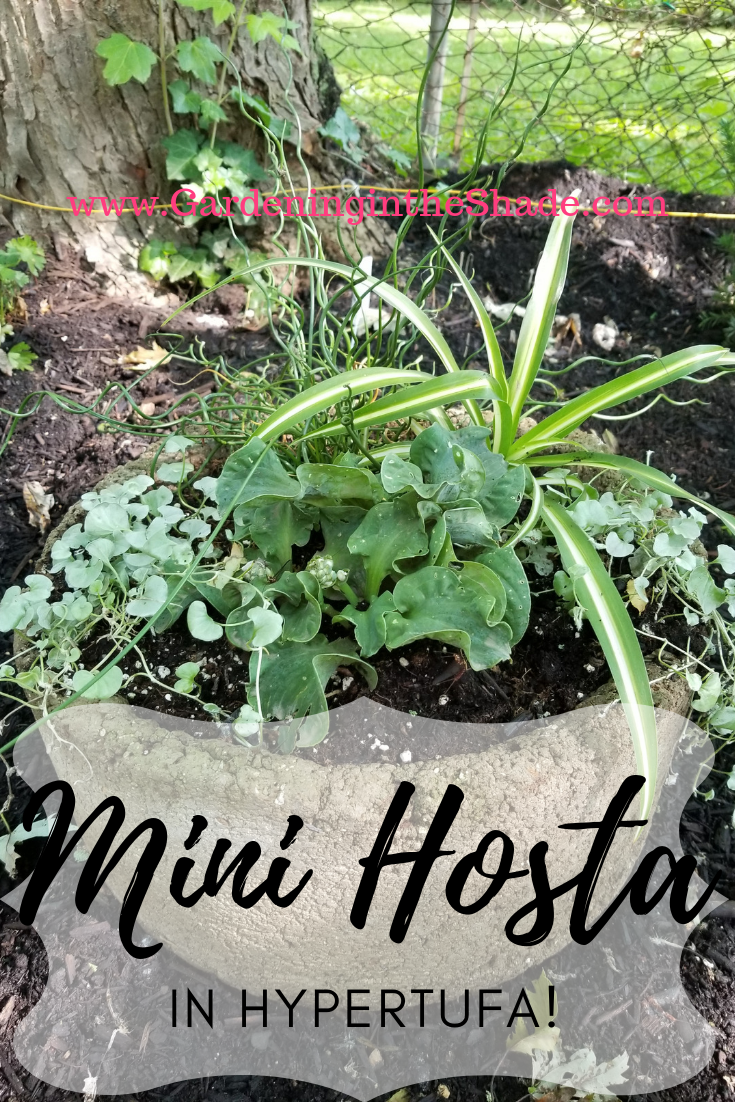
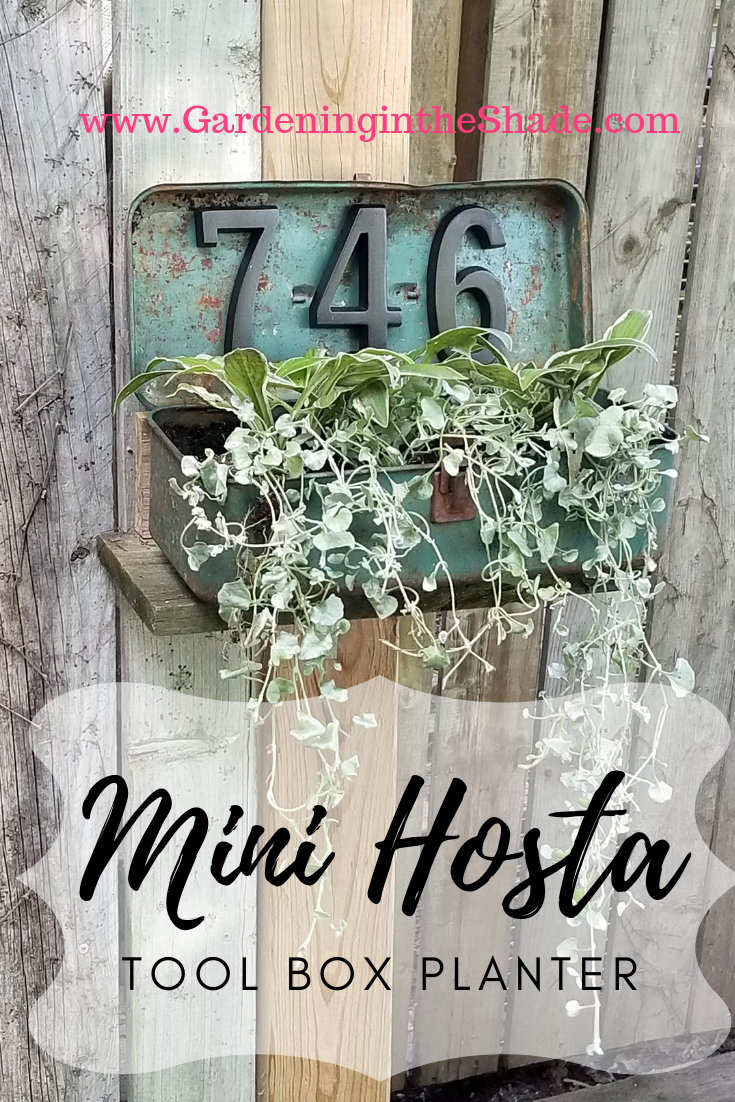
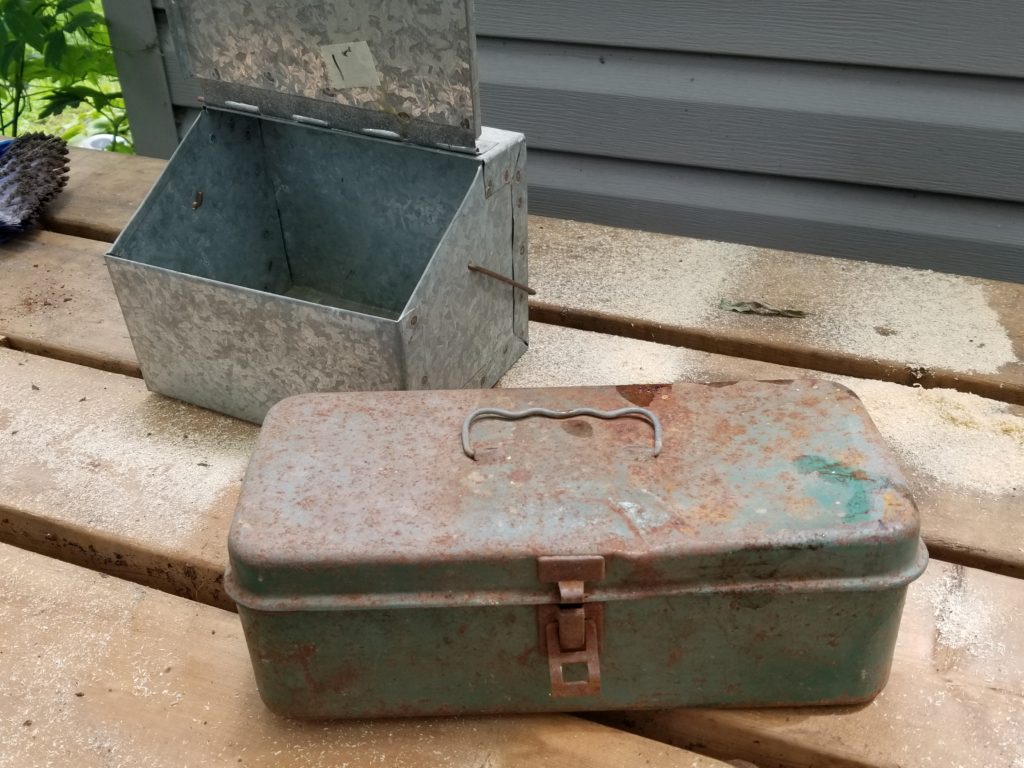 I mentioned a trip to Picker’s Pig Pen in my last post, what I didn’t mention was this fabulous old tool box. It was exactly what I was hoping to find. It has just the right amount of rust and it’s perfectly battered. One of the cutest succulent planters I’ve seen on Pinterest is an assortment of succulents in an old tool box. I needed a tool box so I could reproduce that planter with mini Hosta!
I mentioned a trip to Picker’s Pig Pen in my last post, what I didn’t mention was this fabulous old tool box. It was exactly what I was hoping to find. It has just the right amount of rust and it’s perfectly battered. One of the cutest succulent planters I’ve seen on Pinterest is an assortment of succulents in an old tool box. I needed a tool box so I could reproduce that planter with mini Hosta!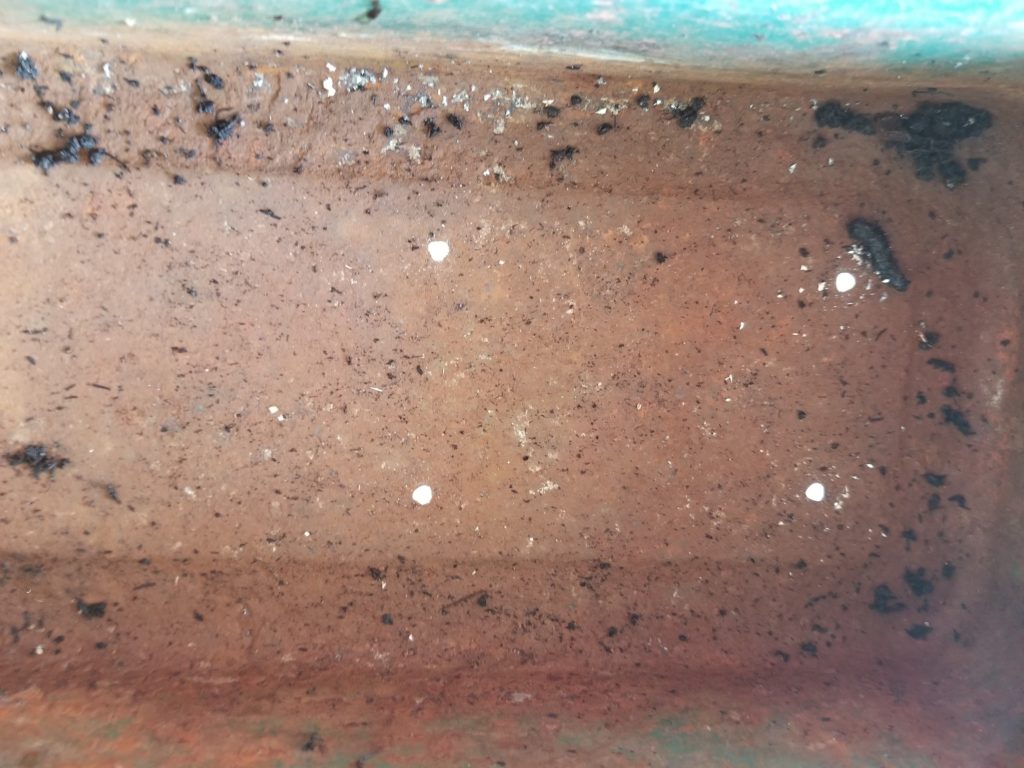 Both metal boxes were cleaned up and I drilled drainage holes in them with a drill bit meant for metal. When you are drilling in metal it helps to have some wood underneath that you don’t mind drilling into. There still might be some burrs, but the holes turn out much neater.
Both metal boxes were cleaned up and I drilled drainage holes in them with a drill bit meant for metal. When you are drilling in metal it helps to have some wood underneath that you don’t mind drilling into. There still might be some burrs, but the holes turn out much neater.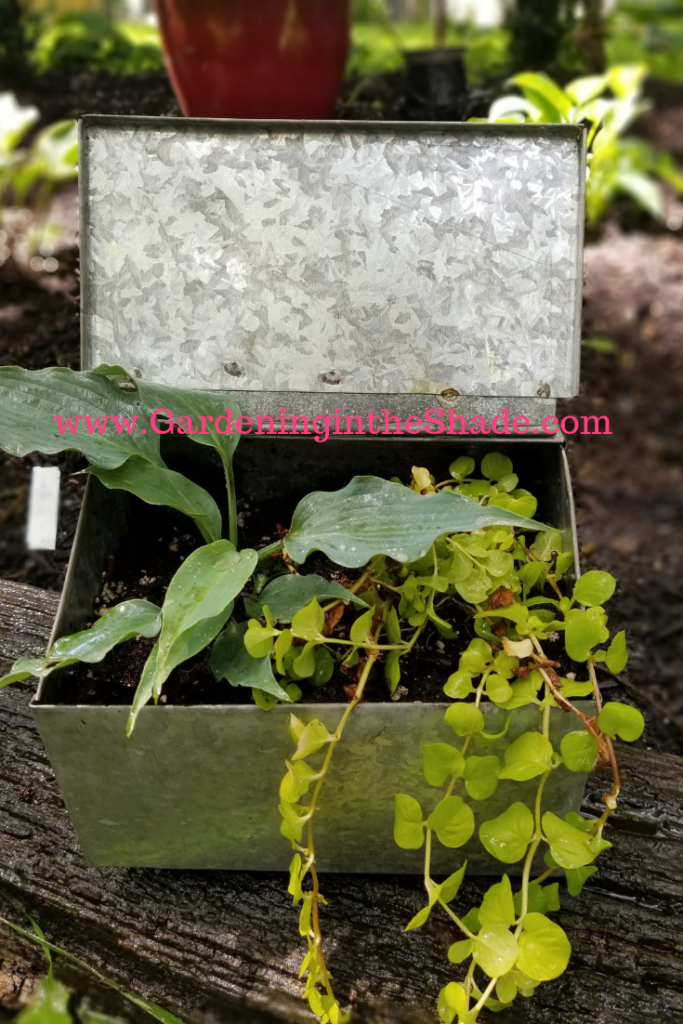
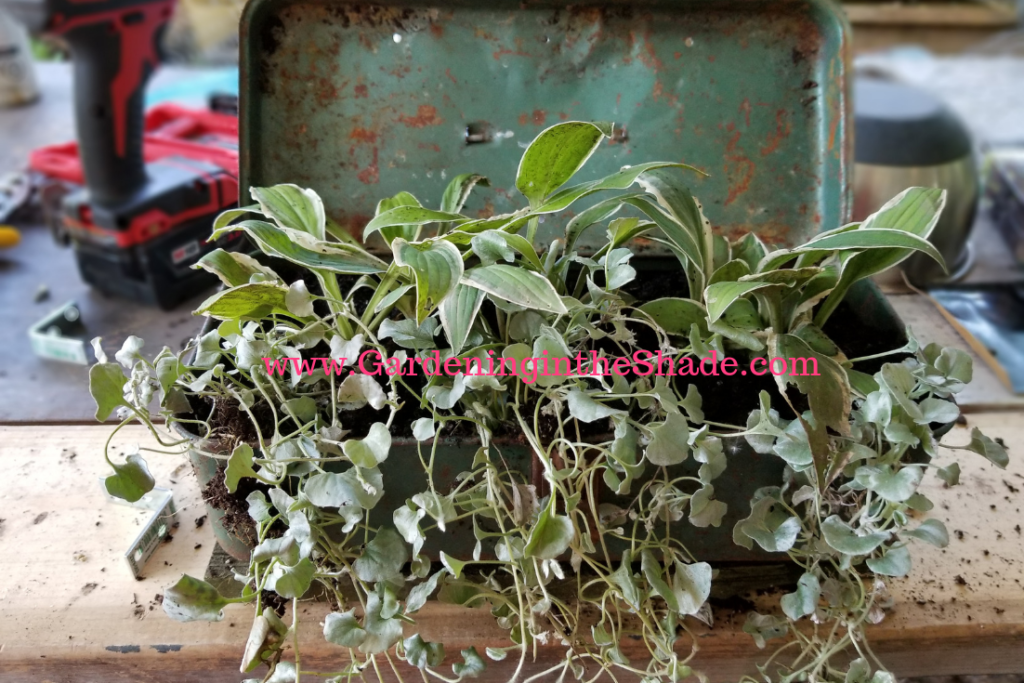
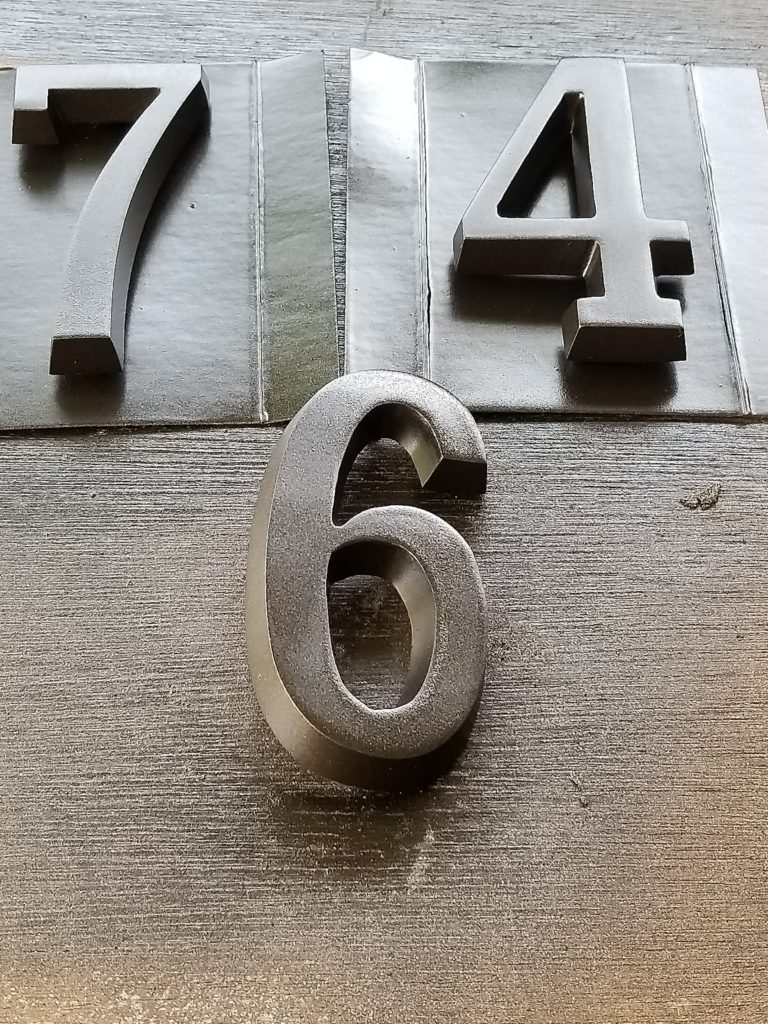
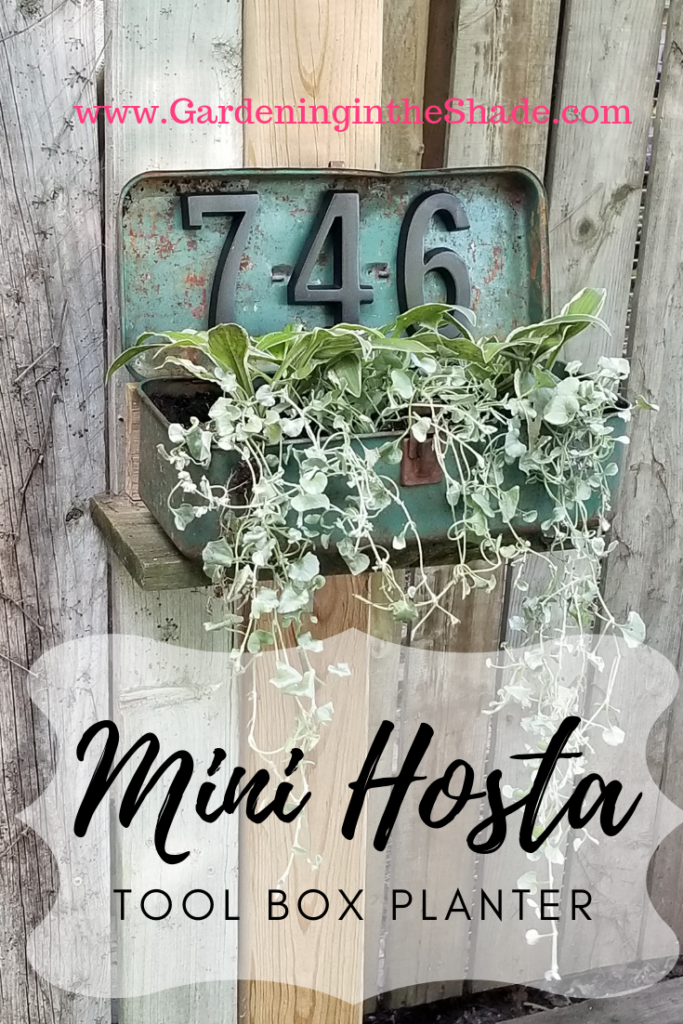
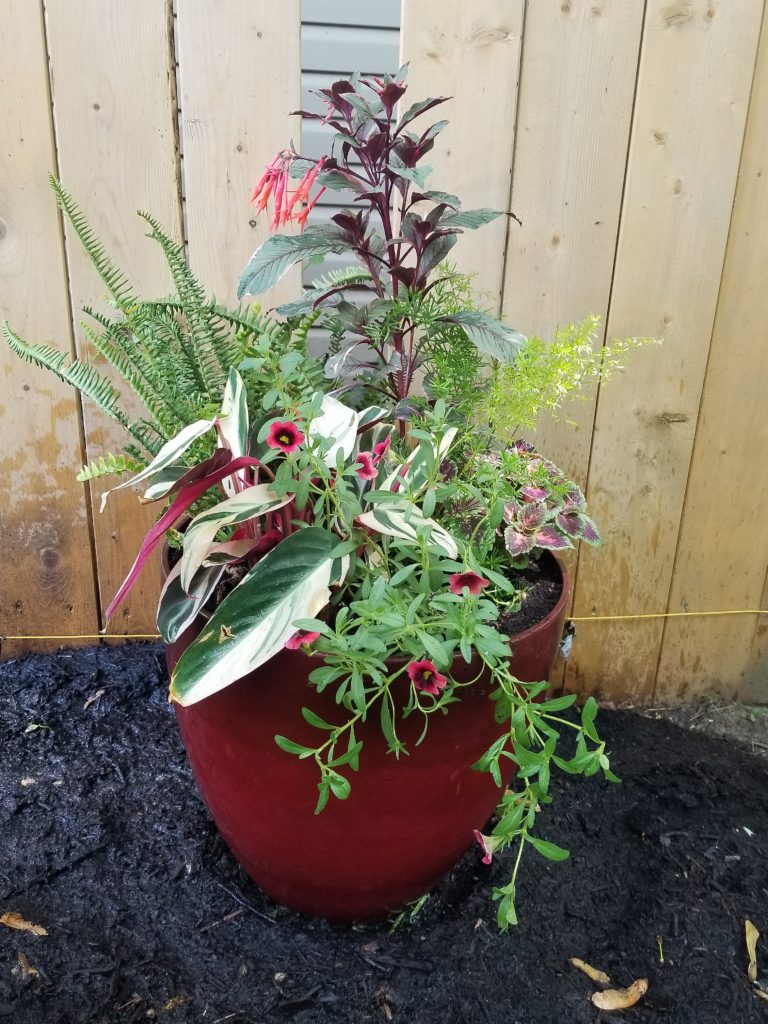
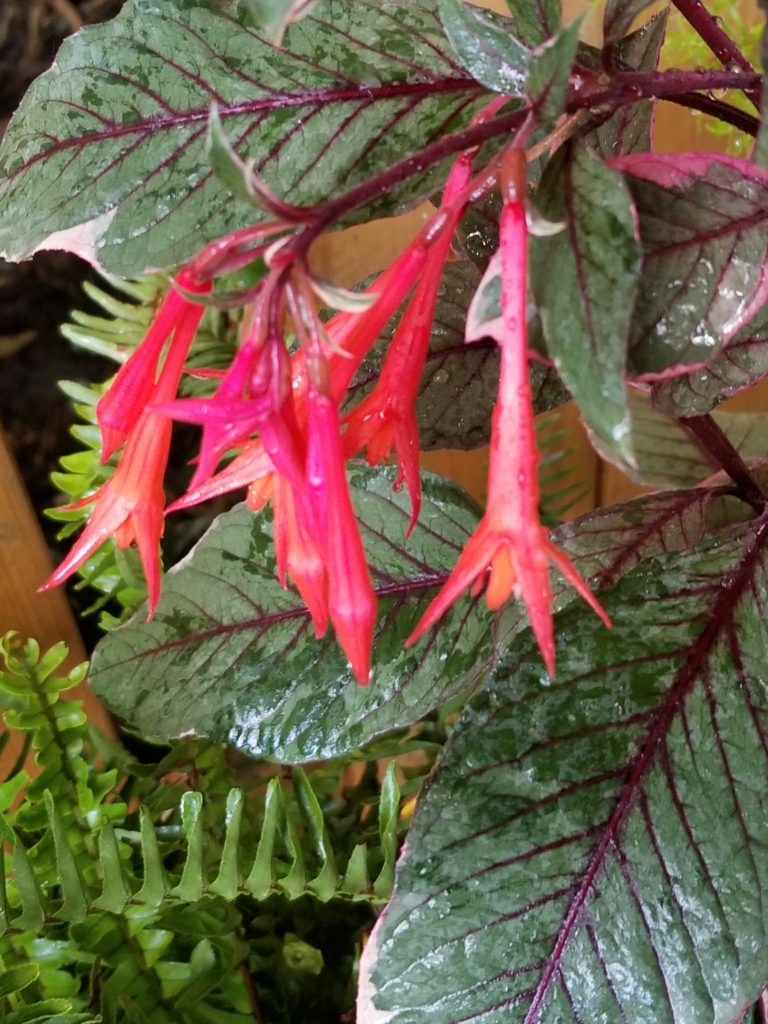
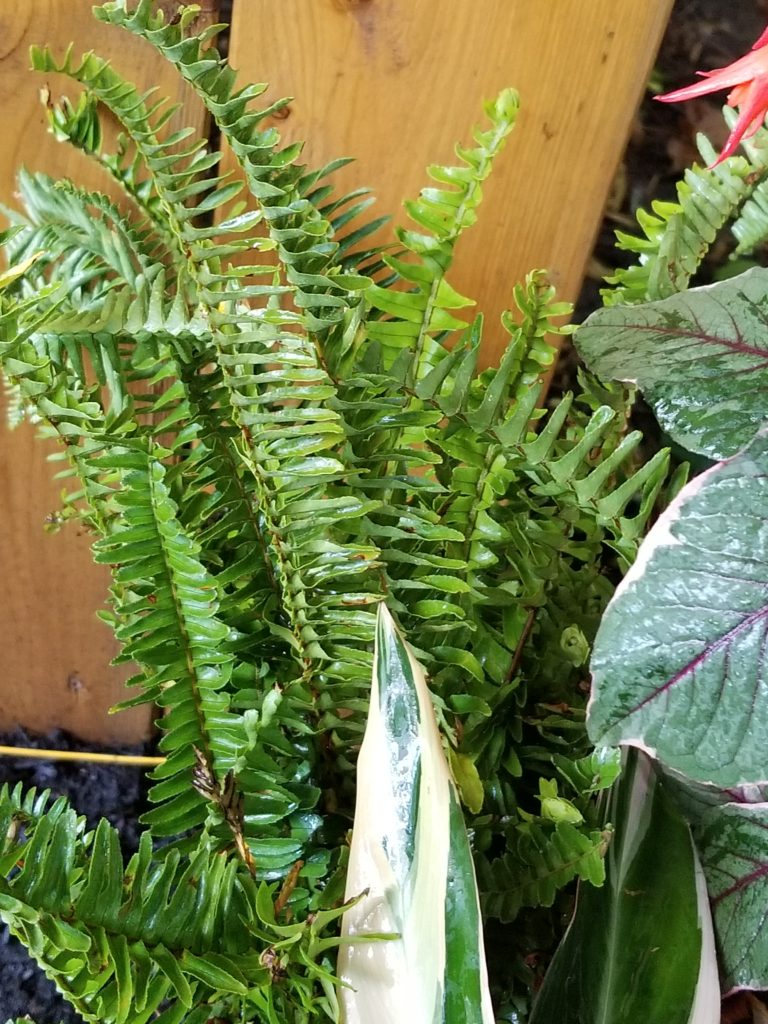
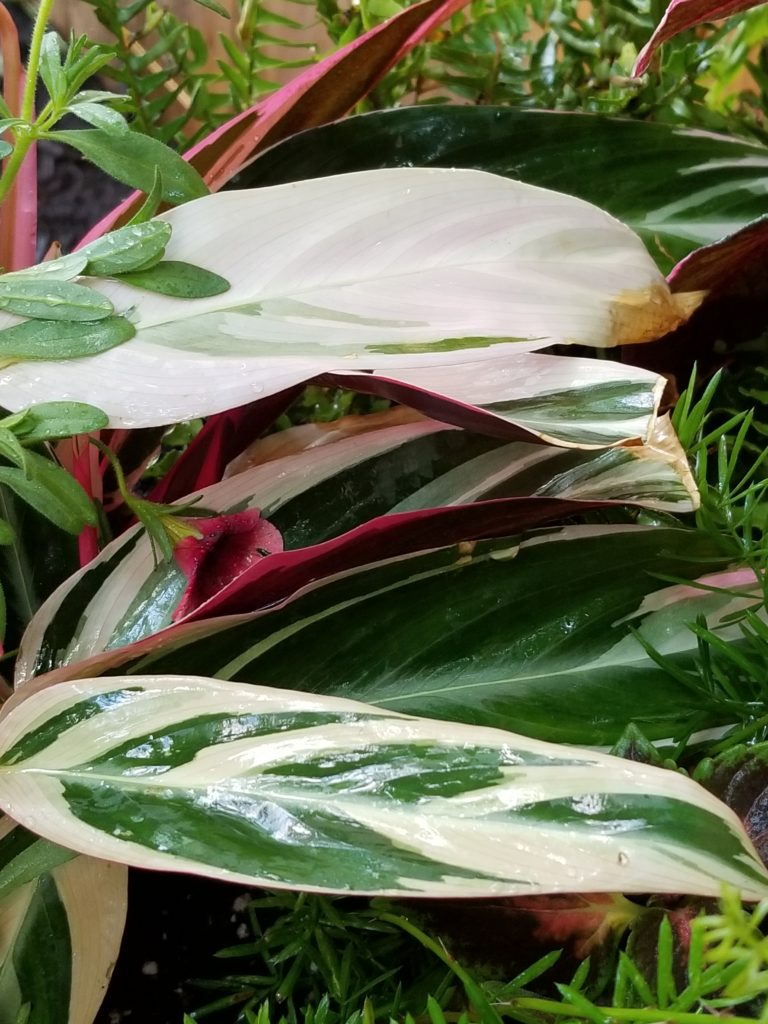
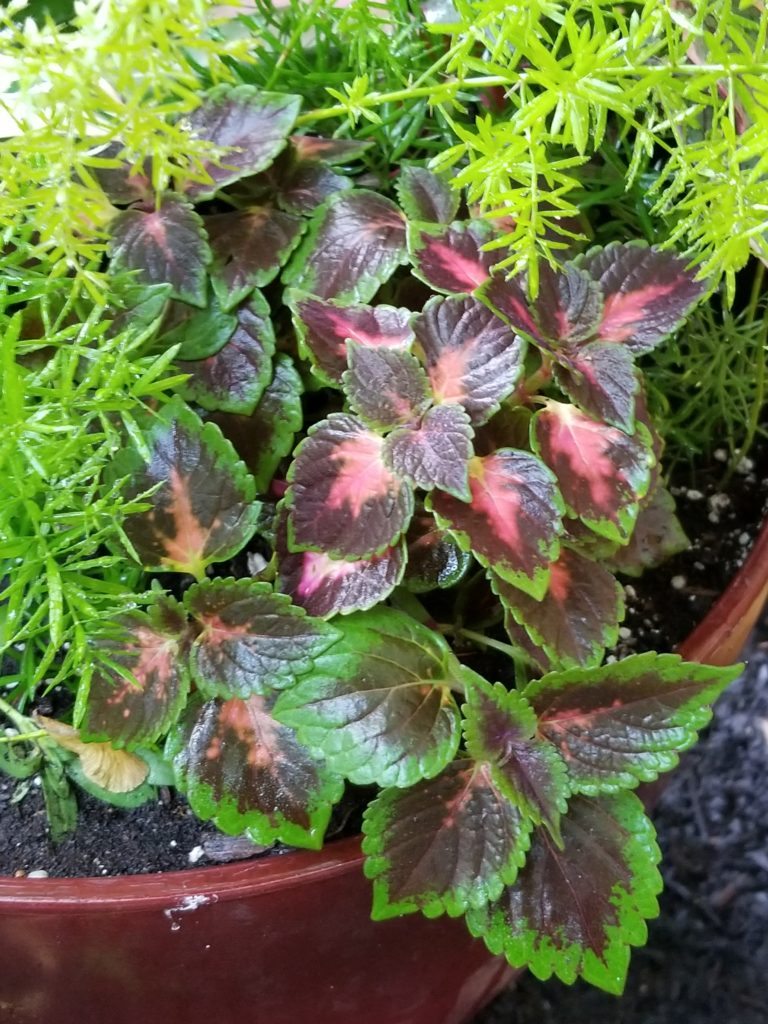
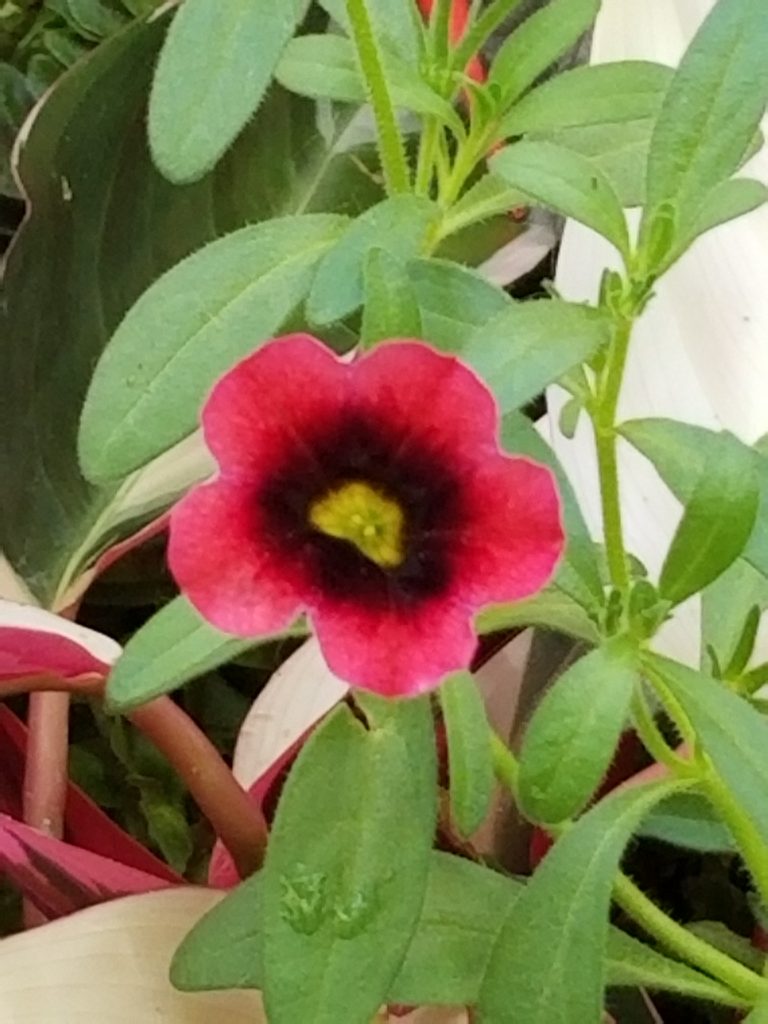 And finally, another ‘spiller’ some Calibrachoa Superbells – Watermelon Punch. I’m not positive on that though – I lost the tag.
And finally, another ‘spiller’ some Calibrachoa Superbells – Watermelon Punch. I’m not positive on that though – I lost the tag.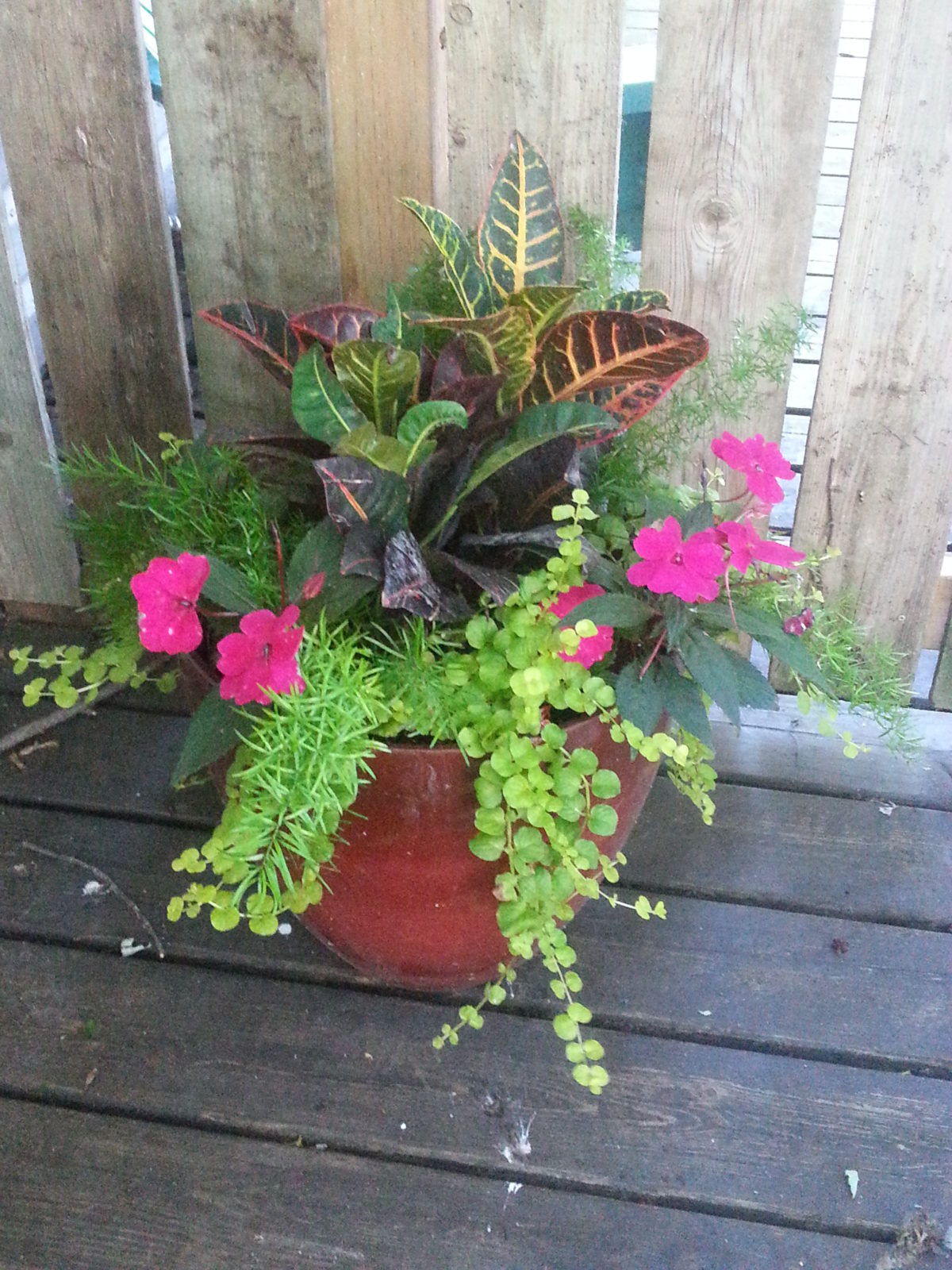
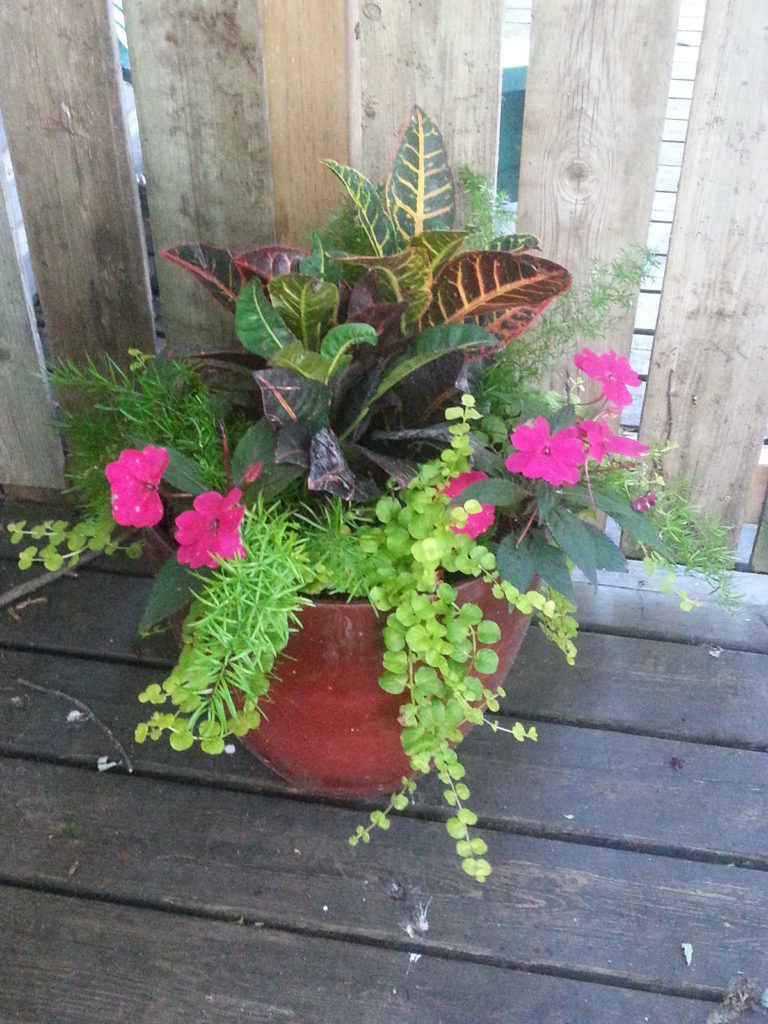

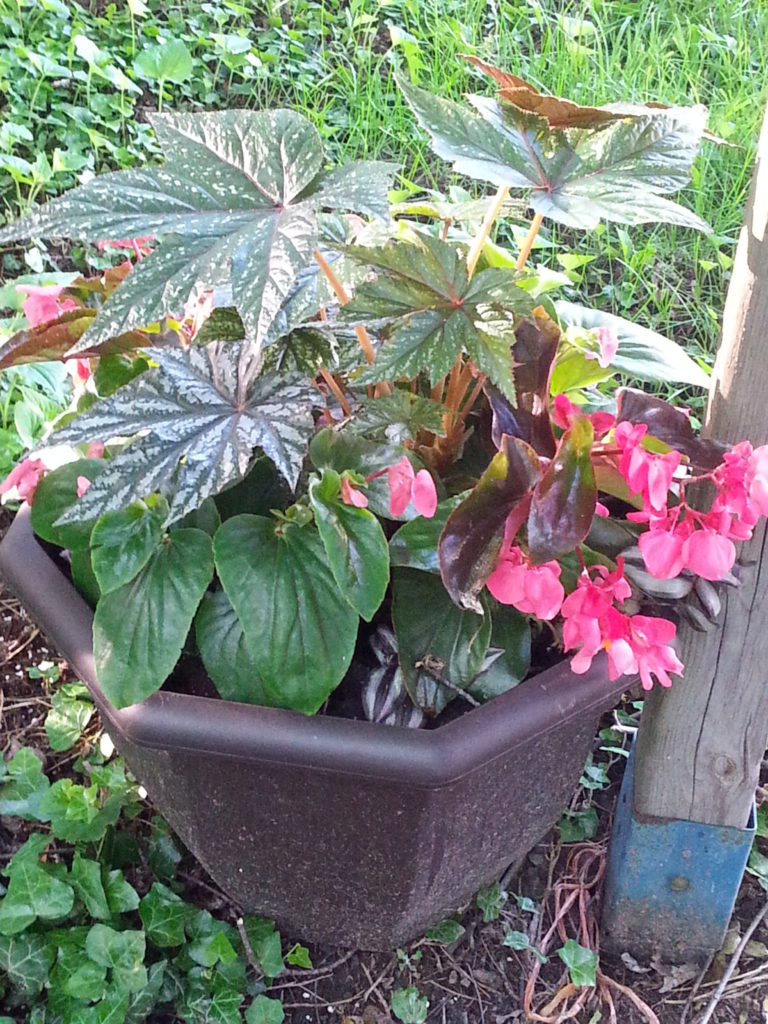
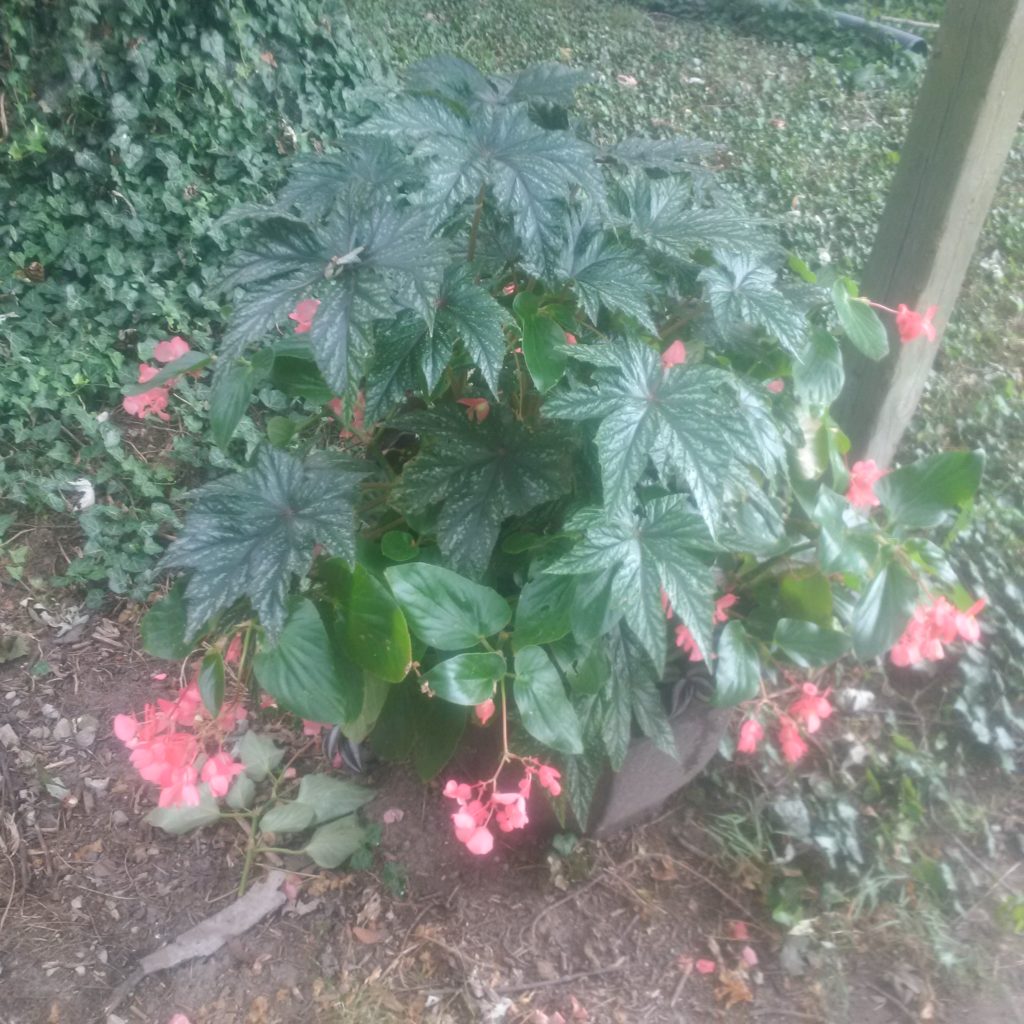
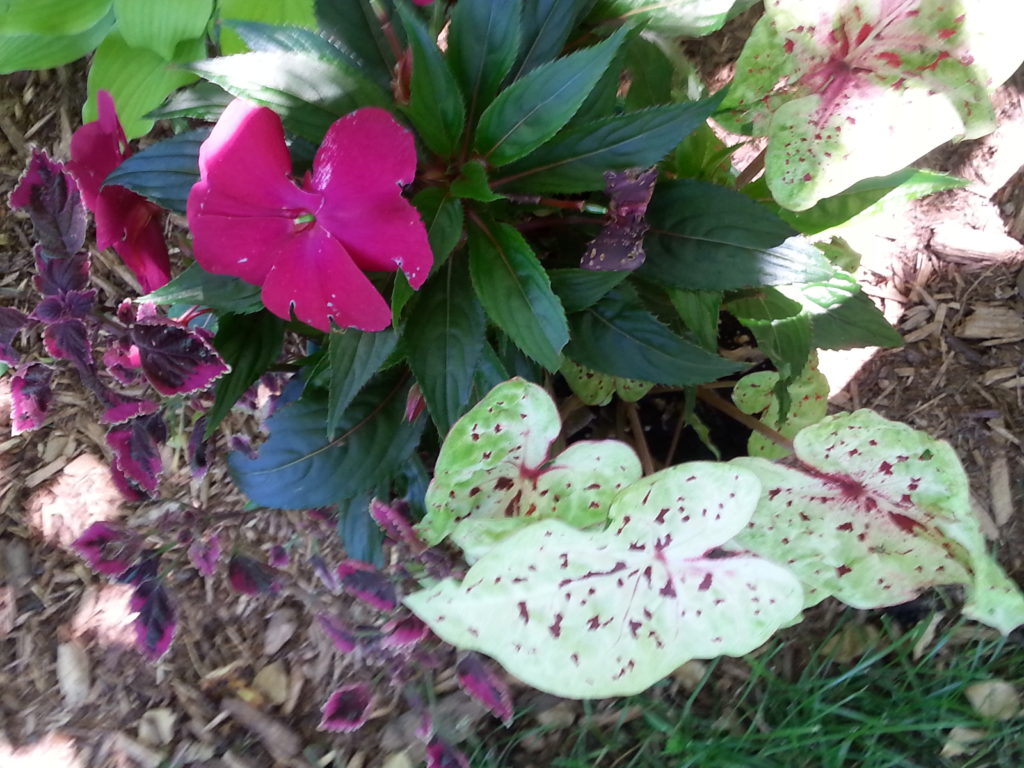
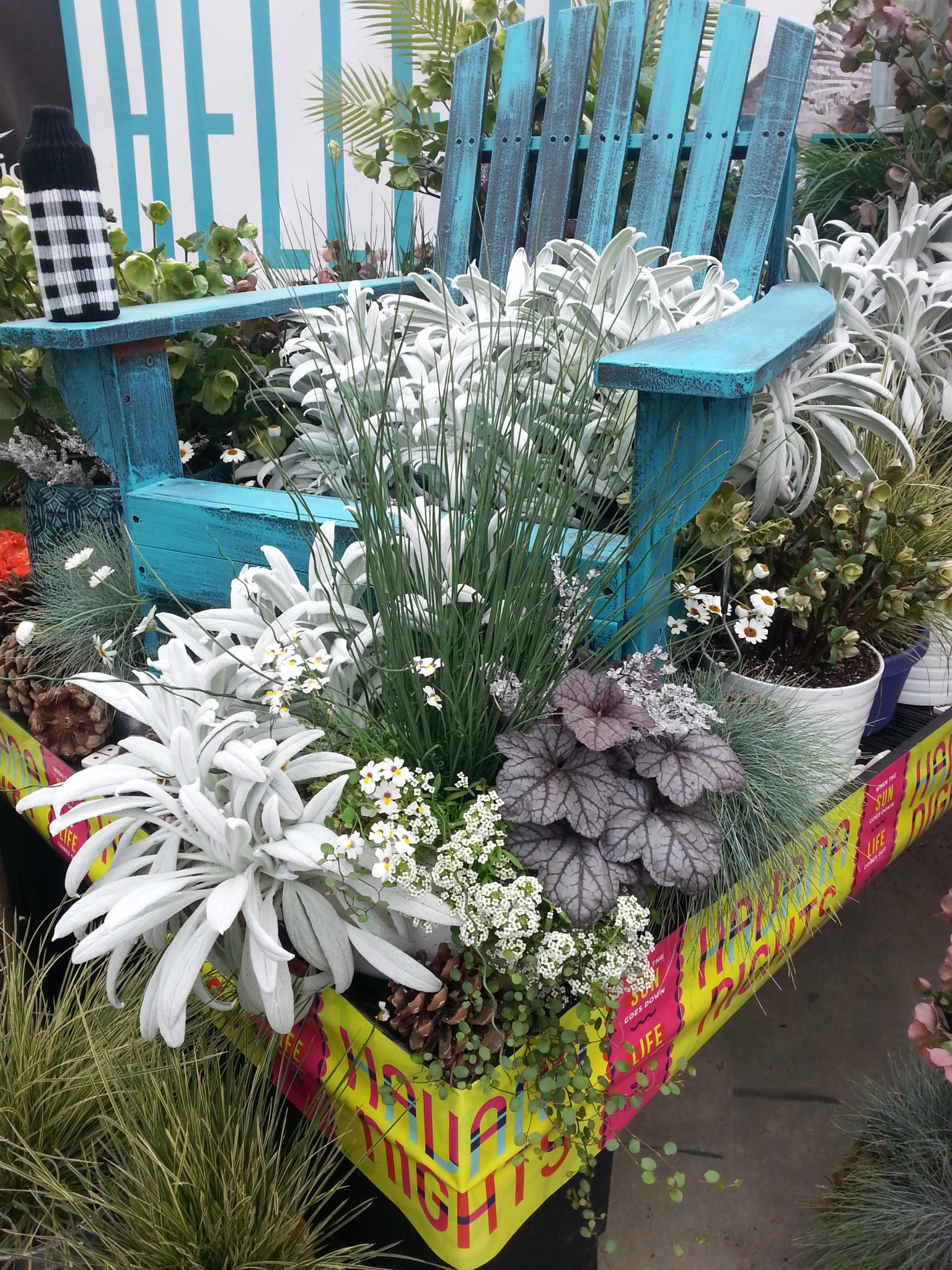 I first encountered Stachys Bello Grigio a year ago in California. The common name for Stachys is Lambs Ears, which is a pretty apt description of the soft furry leaves of these plants, but none of them are as crisply white as Bello Grigio.
I first encountered Stachys Bello Grigio a year ago in California. The common name for Stachys is Lambs Ears, which is a pretty apt description of the soft furry leaves of these plants, but none of them are as crisply white as Bello Grigio.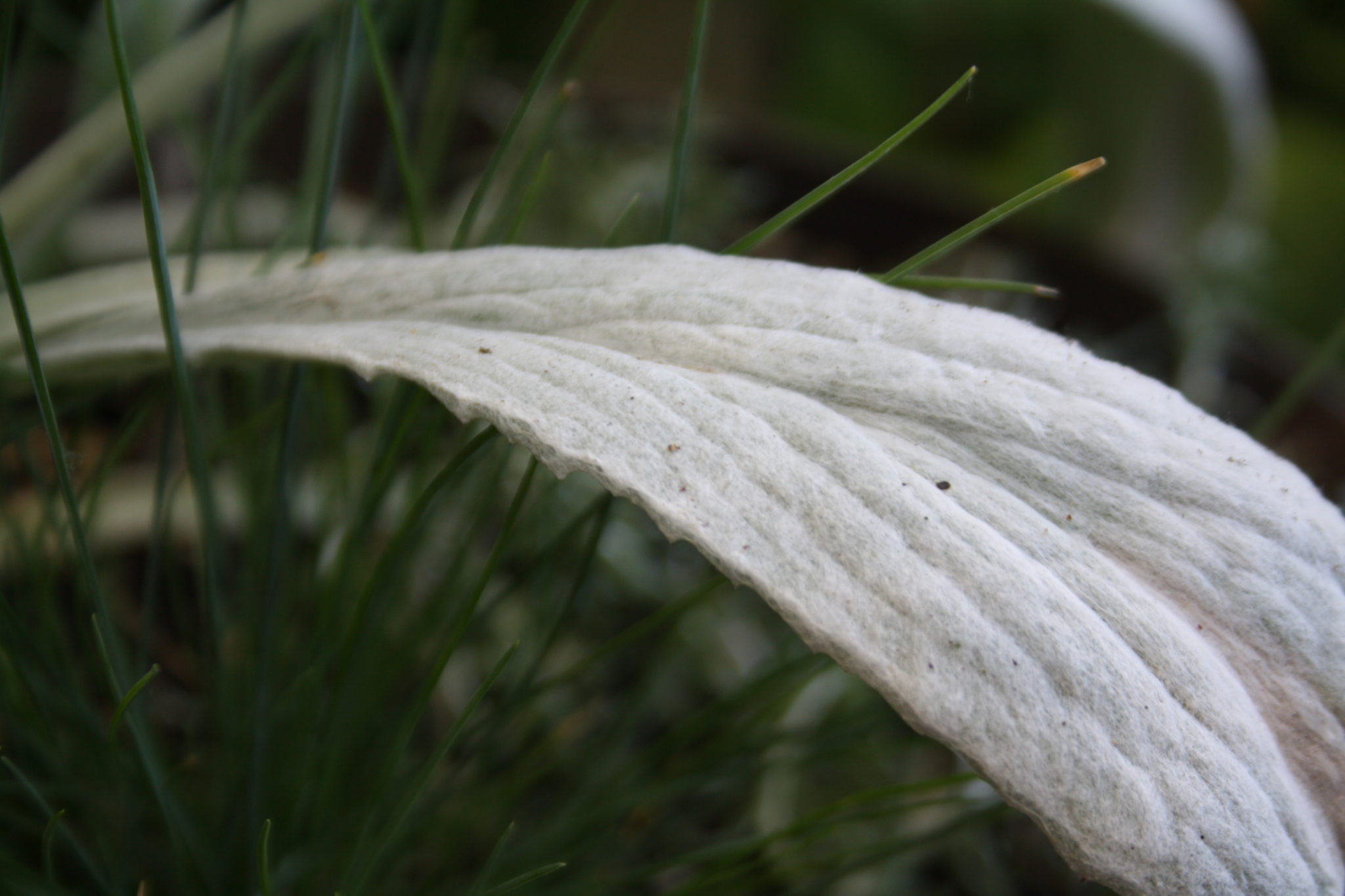 Bello Grigio immediately became my must have plant for the year. Except it was nearly unheard of – even on Google. This year I got lucky and managed to get two. I gave one to my mother and kept the other one.
Bello Grigio immediately became my must have plant for the year. Except it was nearly unheard of – even on Google. This year I got lucky and managed to get two. I gave one to my mother and kept the other one.